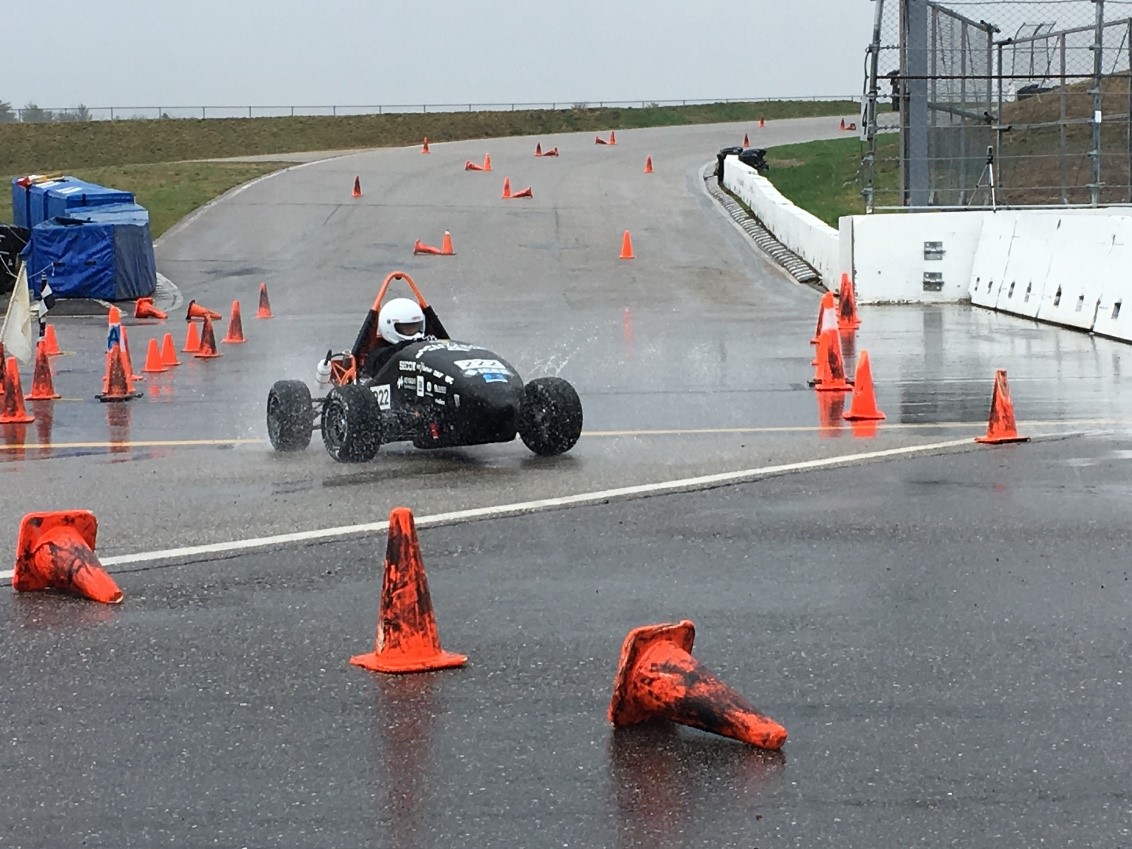Case Study: Isolation Monitoring Interrupters and Student Races

Electrical vehicles have become more mainstream in recent years, and colleges and universities have been early adopters of the movement, constantly fueling the development and interest with student racing competitions. Two of the more popular events in student racing are the Formula Hybrid and Formula SAE races. Students of all backgrounds are drawn to these competitions because they represent the latest technology paired with a desire to save our planet by reducing our need for oil and gas.
How much power is used?
When dealing with the power supply and the energy flow to the motors via complex inverter drives, it is important to note that we are not managing a small, 12VDC system—these systems can reach multiple hundreds of volts. In larger-scale vehicles such as busses and trucks, 1,000VDC seems to be a household number. Insulation is what contains these massive energy systems. To ensure that the insulation barrier does not break down in the harsh environment of driving, a special instrument called an IMI (Isolation Monitoring Interrupter) is mandatory in every electric vehicle (EV). These devices continuously read the resistance between the vehicle chassis and the high-voltage power system of the EV. If the resistance falls below a certain value, an alarm will be triggered, and the vehicle will need to be serviced immediately. If this occurs and the issue is not resolved before the race, then the situation would be deemed unsafe and the vehicle cannot race.
Testing the student-built racecar
Prior to every competition, the student-built vehicle must be test-driven before being shipped to the race track. Once the vehicle arrives at the race, it is test-driven once again. At one of the many student races Bender has been involved in, heavy rain hammered the test track as the students were performing one final test. At every stop, the IMI displayed lower and lower insulation results, causing immense concern. It was apparent that the rain water was getting into the circuitry, creating a hazard that needed to be addressed quickly. Scrambling to solve this issue, the students found connectors that had lost their integrity and a battery compartment that had a broken seal. Fixing those issues would be mandatory before the car was allowed back on track. Thanks to the Bender IMI, these insulation breakdowns were quickly identified and quantitatively measured.
It is challenges like this that act as tremendous learning experiences and stay in students’ minds for years to come. One student that was heavily involved said that this helped him define his career path. After graduating college, he began an engineering career in the EV industry and recently took on the task of building the next generation of electric vehicles at his company. While designing, he noted one of the most critical parts he would need was the IMI and knew he had to call Bender immediately.
For more information about this application or to learn more about Bender technology related to your specific application, contact our team of experts.
This article is for informational purposes only. Bender provides the information "as is" without warranty and is not responsible for its accuracy or reliability. No warranties are given regarding its suitability for any specific circumstances.

.jpg)
-1.jpg?width=352&name=Blank%20300%20x%20175%20(11)-1.jpg)

-1.jpg?width=352&name=Blank%20300%20x%20175%20(15)-1.jpg)